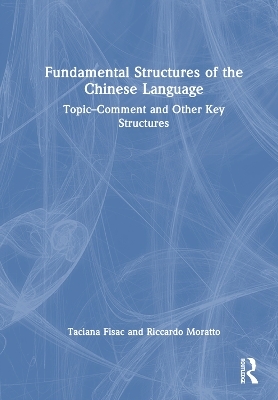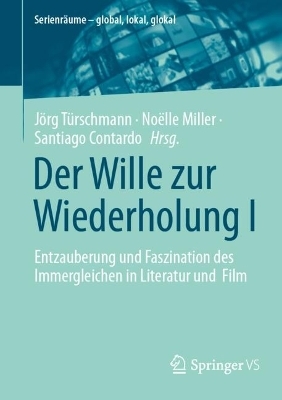
Fundamental Structures of the Chinese Language
Routledge (Verlag)
978-1-032-57420-2 (ISBN)
This book departs from the conventional approach of superimposing grammatical constructs from English onto Chinese and focuses on the topic–comment structure inherent in the Chinese language. Constructions that are usually considered complex or challenging for students whose mother tongues are subject–verb–object languages will be more easily understandable with this analysis. Simple and complex verbal structures are discussed in depth with the incorporation of the aspect category, which provides an enormous richness of nuances in the internal development of the action, and word order is considered one of the key features of the Chinese language. All the explanations are applied to numerous examples of real Chinese texts.
This textbook is a valuable resource for students, teachers, and researchers in Chinese language courses including Chinese translation, Chinese linguistics, and comparison linguistics in general.
Taciana Fisac is Professor of East Asian Studies, specializing in Chinese language and literature, and the founder of the Center for East Asian Studies at the Autonomous University of Madrid. She has dedicated herself to the advancement of East Asian studies. She has been a visiting scholar at various institutions including Stanford University, Oxford University, Leiden University, Ohio State University, and also in China at the Chinese Academy of Social Sciences, Peking University, and Beijing Foreign Studies University. She is the author of numerous publications, primarily on literature, women, and society in China, as well as translations of Chinese literature. Riccardo Moratto PhD, FCIL, is Professor of Translation and Interpreting Studies at the Graduate Institute of Interpretation and Translation (GIIT), Shanghai International Studies University (SISU), AIIC member, Chartered Linguist and Fellow Member of the Chartered Institute of Linguists (CIoL). Author and translator of numerous publications, professor Moratto is general editor of Interpreting Studies for Shanghai Foreign Language Education Press, general editor of Routledge Studies in East Asian Interpreting and Routledge Interdisciplinary and Transcultural Approaches to Chinese Literature. Professor Moratto is also honorary professor at the College of Foreign Studies of Nanjing Agricultural University, Honorary Research Fellow at the Center for Translation Studies of Guangdong University of Foreign Studies, expert member of the Translators Association of China (TAC), and honorary member of the Associação de Tradutores de Macau. Professor Moratto is a conference interpreter and renowned literary translator. He has published extensively in the fields of translation and interpreting studies and Chinese literature.
Foreword
Preface
Introduction
I. Importance of the “topic-comment” structure
1.1 Topics occupy a fixed position at the beginning of the sentence
1.2 Topics are definite or identifiable references
1.3 Topics consist of one or more words
1.4 Topics do not necessarily correspond to the “grammatical subject” of the verbal action
1.5 Phonological elements marking the topic
1.6 Topics can be marked by specific terms
1.7 Single topic, multiple topics or a string of topics
1.8 Elision of the topic
1.9 Topics are independent from comments
1.10 Comments may consist of one or more words
1.11 One comment or a string of comments
1.12 Comments can be marked
1.13 Comments cannot be omitted
1.14 Comments as predication
1.15 “Topic-comment” structures in coordinated clauses
1.16 Interrogative clauses
1.17 The identification of the "topic-comment" structure is essential for constructing negation
1.18 Initial expressions of time or place can serve as a topic or establish a frame of reference for an event
1.19 Constructions with bǎ 把 as double-topic clause
1.20 Constructions with bèi 被 as double-topic definite reference clauses
1.21 Constructions with shì是 as topic-focus clauses
1.22 Constructions with jiù 就 as clauses with a focus marker
1.23 Constructions with dōu 都 as clauses with focus and definite reference
1.24 The “topic-comment” structure and punctuation marks
1.25 The “topic-comment” structure in Classical Chinese
1.26 The structure of dialogues
1.27 The “topic-comment” structure in translation
1.28 Summary
II. Verbal aspect: a fundamental category in the Chinese language
2.1 Stative verbs
2.2 Auxiliary verbs
2.3 Verb-object incorporation compounds
2.4 Aspect: fundamental category of Chinese verbs
2.5 The unmarked form of the verb
2.6 The perfective aspect suffix le 了
2.7 The experiential aspect suffix guo 过
2.8 The progressive aspect suffix zhe 着
2.9 The use of the infix de 得
2.10 The tentative, limiting, or punctual nature of the verb and its reduplication
2.11 Verbs of movement that specify the direction of the action
2.12 Verbs incorporating the result of the action
2.13 Verbs incorporating the feasibility or impossibility of the action
2.14 The specification of the action or result of movement in a figurative sense
2.15 Summary
2.16 Summary table of the most frequent Chinese aspectual markers
2.17 Model of “aspectual conjugation” in Chinese
III. The arrangement of phrasal constituents and grammatical markers
3.1 The arrangement of elements around the nominal phrase
3.2 Grammatical markers for noun identification
3.3 The order of elements in the verbal phrase
3.4 The position of the adverb
3.5 Coverbs or prepositions?
3.6 The position of comparison terms
3.7 The arrangement of expressions and terms related to time and place
3.8 The spatial and temporal positioning through postpositions
3.9 The conjunction of words and sentences
3.10 Interrogative markers
3.11 Modal clause markers
3.12 Summary table of the order of elements
IV. Identification of structures, grammatical markers, and word order in a written text
4.1 Topic-comment structure
4.2 Use of de 的 as a noun phrase marker
4.3 Demonstratives, numerals or quantifiers, and classifiers as markers of the noun phrase
4.4 Adjectives and noun modifiers
4.5 Place references and postpositions
4.6 Temporal references
4.7 Verbs and aspect
4.8 Markers of the verb phrase: adverbs
4.9 Conjunctions of words and clauses
4.10 Comparison terms
4.11 Clause markers
4.12 Summary of the “topic-comment” structure
4.13 A literary translation
References
Index
| Erscheinungsdatum | 11.04.2024 |
|---|---|
| Zusatzinfo | 57 Tables, black and white |
| Verlagsort | London |
| Sprache | englisch |
| Maße | 174 x 246 mm |
| Gewicht | 707 g |
| Themenwelt | Schulbuch / Wörterbuch ► Wörterbuch / Fremdsprachen |
| Geisteswissenschaften ► Sprach- / Literaturwissenschaft ► Anglistik / Amerikanistik | |
| Geisteswissenschaften ► Sprach- / Literaturwissenschaft ► Literaturwissenschaft | |
| Geisteswissenschaften ► Sprach- / Literaturwissenschaft ► Sprachwissenschaft | |
| Sozialwissenschaften ► Pädagogik | |
| ISBN-10 | 1-032-57420-8 / 1032574208 |
| ISBN-13 | 978-1-032-57420-2 / 9781032574202 |
| Zustand | Neuware |
| Haben Sie eine Frage zum Produkt? |
aus dem Bereich


